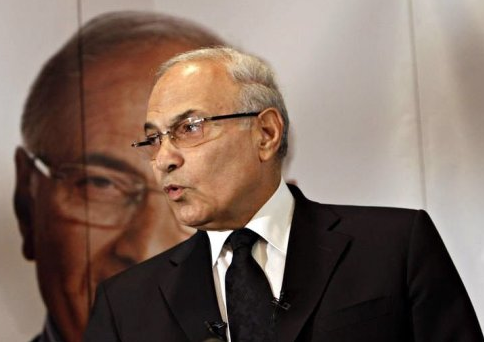 Ever since 25 January 2011, Egypt has been searching for a new balance. For, the revolution, like any other revolution, replaced the existing balance with a new one. The transitional phase that follows any revolution is the phase during which the powers that had participated in the revolution clash with each another in order to obtain a larger share within the new balance.
Ever since 25 January 2011, Egypt has been searching for a new balance. For, the revolution, like any other revolution, replaced the existing balance with a new one. The transitional phase that follows any revolution is the phase during which the powers that had participated in the revolution clash with each another in order to obtain a larger share within the new balance.
If the political scene prior to a revolution only consisted of two powers, the regime and the opposition, then the revolution would lead directly, without the aforementioned transitional phase, to installing the opposition powers in the place of the regime. However, things do not traditionally proceed in this manner, as the groups that successfully overthrew the regime are generally ideologically diverse. Thus, after overthrowing the existing regime, these revolutionary powers begin to clash with each other.
This clash always ends in one of two scenarios: either one of these groups successfully finishes off the other powers and monopolises the constructing of a new regime; or these groups divide power and influence within the construction of the new regime.
Perhaps the most obvious example of the first scenario is the aftermath of the Iranian revolution in which ‘Khomeinism’ successfully imposed its authority and finished off all the powers that had contributed to toppling the Shah’s regime. As such, the transitional phase between the overthrow of the Shah and Khomeini’s monopolisation of power did not last longer than a few months.
On the other hand, the second scenario applies to the aftermaths of the Portuguese revolutions, all of which ultimately lead to the creation of new balances of power after passing through transition phases of different lengths and varying levels of confusion and disorder. Moreover, not only did all the participants in these revolutions have a place in the new regimes but representatives of the former regimes did so as well, once they had changed their ideologies and natures to some extent. Thus, these revolutions ultimately lead to a new balance of power in which change itself had been limited to the sizes and features of those powers, which had formed the contents of the previous regime.
I return now to Egypt. Has the transition phase ended? Has the country reached a new balance of power? I believe that the transitional phase has not ended, that Egypt has not reached a new balance of power, and that conflict is still occurring on not only the nature of the socio-economic and political regime but also the identity of the state.
I believe that this ongoing conflict is between the powers attempting to construct a hegemonic nation-state (at the heart of which are the remnants of the Mubarak regime), the powers of Political Islam (at the heart of which is the Muslim Brotherhood) and the democratic current powers (at the heart of which are the social-democratic powers). Most likely, this conflict will not end with one of these powers successfully finishing off the other two powers. This is to say that an alliance between any two of these powers will not be successful as any two of these parties will not be able to finish off the third party.
Thus, there is only the second scenario: coexistence according to a new balance of power between the three parties. It is useful to remember here that the three groups existed prior to the revolution and that all that the revolution will do is construct a new balance of power that does not exclude any of these powers but rather fundamentally changes their sizes, features, and ideologies.
To date, none of the three groups has been convinced that coexistence is inevitable. Instead, there are significant forces within each group that seek by all means to impose their wishes on the other powers, as has been made clear in the process of drafting the country’s new constitution. The constitution, as a document that will reflect the size and strength of each group, has been a subject of continuous fierce conflict ever since the Constituent Assembly was formed and the groups disagreed over the share allotted to each within it.
This conflict has since extended to include some of the articles of the constitution itself, and thus reflects the ability of each party to impose its perceptions and wishes on the others. Throughout the transitional phase that began on 3 March 2011 and continues to this day, the conflict over the Egyptian constitution has passed through different stages in which balances have shifted in favour of one group or another.
Let us consider the stages of this conflict. In the beginning, after the overthrow of Mubarak, it appeared that the military council, which represented the forces of the state, was the strongest group in terms of holding the reins of power and all the sites of executive power. The democratic forces, in turn, appeared to be the strongest power in the street. But as the democratic forces’ Friday protests continued and their revolutionary tide ebbed due to the painful blows to dealt to its protests and sit-ins near Maspero, Mohamed Mahmoud Street, the Cabinet, and Abbaseyya, the power of the Islamists grew, especially after the Islamists withdrew from Tahrir Square to prepare for Parliamentary elections in which they reaped at least three quarters of the seats.
And with the subsequent victory of President Morsy and the removal of Tantawi, the executive and legislative powers are now centralised in the hands of the Muslim Brotherhood. Meanwhile, the number of people attending democratic forces’ protests has been fallen to the degree that such protests are said to be partisan in nature. These developments have led some observers to say that the Muslim Brotherhood has complete power and is able to impose their agenda. But, what happened the week before last surprised these observers.
The democratic forces calling for the Friday protest named “Balance Sheet” appeared so weak that some leaders of the Muslim Brotherhood were motivated to conspire to prevent them from entering Tahrir Square and thus announce to all the relevant conservative forces at home and abroad that everything was now under Muslim Brotherhood’s complete control.
Moreover, the forces of the state appeared to have withdrawn from the political scene after the removal of Tantawi to point out that the president, backed publicly by the Muslim Brotherhood, was motivated to issue a decree dismissing the public prosecutor based upon the court rulings for the Battle of the Camel. This was surprising that the democratic groups successfully entered the square, despite being exposed to attacks that left dozens injured and that all of the forces of the state mobilised in the face of the president’s decree to return the public prosecutor his position aided, in part by the marked bias of most democratic forces for judicial independence.
The Muslim Brotherhood’s defeat at the hands of the democratic forces the Friday before last, the success of the Friday protests entitled “Egypt is not a manor”, and the public prosecutor containing to hold his position, are all credible and serious indicators that tangibly reflect the Muslim Brotherhood’s declining popularity and power over the past months. Attention was first paid to this decline after the presidential elections in which the Muslim Brotherhood only received half the votes that they had received in the parliamentary elections.
One wonders whether this new evidence for the Muslim Brothers’ declining power will persuade and convince them that coexistence and compromise between the three powers is both necessary and urgent.




